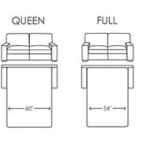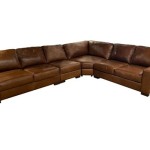How To Fix a Hole in a Leather Sofa
Discovering a hole in a leather sofa can be disheartening. Leather furniture represents a significant investment, and damage like this can feel detrimental. Fortunately, depending on the severity of the damage, several effective repair methods exist to restore the sofa's appearance and prevent further deterioration.
Assessing the Damage
Before undertaking any repair, it's crucial to assess the damage thoroughly. A small tear or puncture requires a different approach than a large gaping hole. Examine the edges of the hole to determine if they are frayed or clean. This assessment informs the best repair method and the necessary materials. Additionally, identify the type of leather; aniline, semi-aniline, pigmented, or corrected grain, as different leather types respond differently to repair techniques.
Patching Small Holes and Tears
For minor holes and tears, a leather patch offers a viable solution. Begin by cleaning the area around the damage with a dedicated leather cleaner. Subsequently, cut a patch of leather slightly larger than the hole from a hidden area of the sofa, such as underneath or behind the cushions, if possible. Alternatively, purchase a leather repair patch that closely matches the sofa's color and texture. Using a leather adhesive specifically designed for furniture, apply a thin layer to the underside of the patch. Carefully align the patch over the hole, pressing it firmly into place. Use a clean cloth to wipe away any excess adhesive. Allow the adhesive to cure completely according to the manufacturer's instructions. After drying, a leather conditioner can help blend the patch into the surrounding area.
Repairing Larger Holes with Sub-Patching
Larger holes require a sub-patch to provide support and prevent the repair from stretching or tearing further. First, trim any frayed edges around the hole. Cut a piece of flexible fabric, like canvas or denim, slightly larger than the hole. This fabric will serve as the sub-patch. Insert the sub-patch through the hole and position it so it lies flat against the underside of the leather. Secure the sub-patch by using a leather adhesive around the edges of the hole on the underside of the leather. Once the adhesive is dry, fill the hole from the top side with a leather filler compound. Select a filler that closely matches the sofa's color. Apply thin layers, allowing each layer to dry completely before applying the next. Once the filler is level with the surrounding leather, gently sand it smooth with fine-grit sandpaper. Finish by applying a leather sealant and conditioner to protect the repair and blend it seamlessly with the rest of the sofa.
Using Leather Filler for Punctures and Small Tears
Small punctures and tears can often be effectively repaired using only a leather filler compound. First, clean the damaged area with a leather cleaner. If the tear has frayed edges, carefully trim them with small scissors. Using a palette knife or similar tool, apply the leather filler to the damaged area. Build up thin layers, allowing each layer to dry thoroughly before applying the next. Once the filler is level with the surrounding leather, use fine-grit sandpaper to smooth the surface. Apply a leather sealant followed by a leather conditioner for a finished look.
Seeking Professional Repair
For extensive damage or for valuable antique leather furniture, professional upholstery repair is recommended. Professional upholsterers possess the expertise and specialized tools to handle complex repairs effectively. They can also match the leather precisely, ensuring a seamless and invisible repair.
Preventing Future Damage
Preventing future damage is essential to maintain the integrity of a leather sofa. Regularly cleaning the sofa with a dedicated leather cleaner and conditioner helps keep the leather supple and prevents cracking. Avoid placing sharp objects on the sofa, and keep pets from scratching or clawing the leather. Promptly addressing any small tears or punctures prevents them from escalating into larger, more difficult-to-repair issues.
Understanding Leather Types
Different leather types require slightly different approaches to repair. Aniline and semi-aniline leathers are more absorbent and require careful attention to color matching. Pigmented and corrected grain leathers are more resistant to staining and require more aggressive cleaning methods. Understanding the specific type of leather on the sofa is crucial for choosing the right repair materials and techniques.

46 How To Repair Cuts And Holes In Leather By Mohawk Finishing S Mpg

Sofa Repairs With Leather Stitching Wefixanysofa Com

4 Diy Simple On How To Repair A Hole In Leather Recliner Krostrade

Leather Sofa Repair The Man

How To Fix A Large Hole In Leather Couch

How To Repair Tears And Holes In Leather With Fluid Filler

How To Repair Torn Leather

Sofa Repairs With Leather Stitching Wefixanysofa Com

How To Repair A Leather Couch With Diy Tactics Home Of Cozy

How To Use Our Leather Repair Kit Fix Damage In








